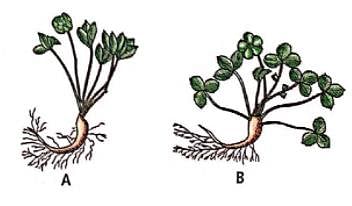Test: Taxonomic Aids - NEET MCQ
10 Questions MCQ Test NCERTs at Fingertips: Textbooks, Tests & Solutions - Test: Taxonomic Aids
Which of the following figures represents the correct method of pressing plants to form herbarium sheets?


| 1 Crore+ students have signed up on EduRev. Have you? Download the App |
Study the following statements and select the correct ones.
(i) Herbarium is a store house of collected plant specimens that are dried, pressed and preserved on sheets.
(ii) Flora provides the index to the plant species found in a particular area.
(iii) Monographs contain information on only one taxon.
Match Column-I with Column-ll and select the correct option from codes given below.
Column-I
(A) Royal botanical garden, kew
(B) Indian botanical garden
(C) National Botanical Research Institute
(D) Lloyd Botanical Garden
Column-ll
(i) Lucknow
(ii) England
(iii) Howrah
(iv) Darjeeling
Match Column I with Column-ll and select the correct option from the codes given below.
Column-I
(A) Botanical garden
(B) Zoological park
(C) Museum
(D) Herbarium
Column-II
(i) Preserved plant specimens
(ii) Preserved plant and animal specimens
(iii) Living plants
(iv) Living wild animals
The plants growing in an area surrounded by a geographical or political boundary will be included in
Read the following statements and select the correct option
Statement 1: Zoological parks are the places where wild animals are kept in protected environments under human care and which enable us to learn about their food habits and behaviour.
Statement 2: Adequate arrangements for the treatment, medication, regular check up and pathological investigations are absolutely necessary to be made for the health, care and upkeep of the animals.
|
257 docs|234 tests
|
|
257 docs|234 tests
|

















